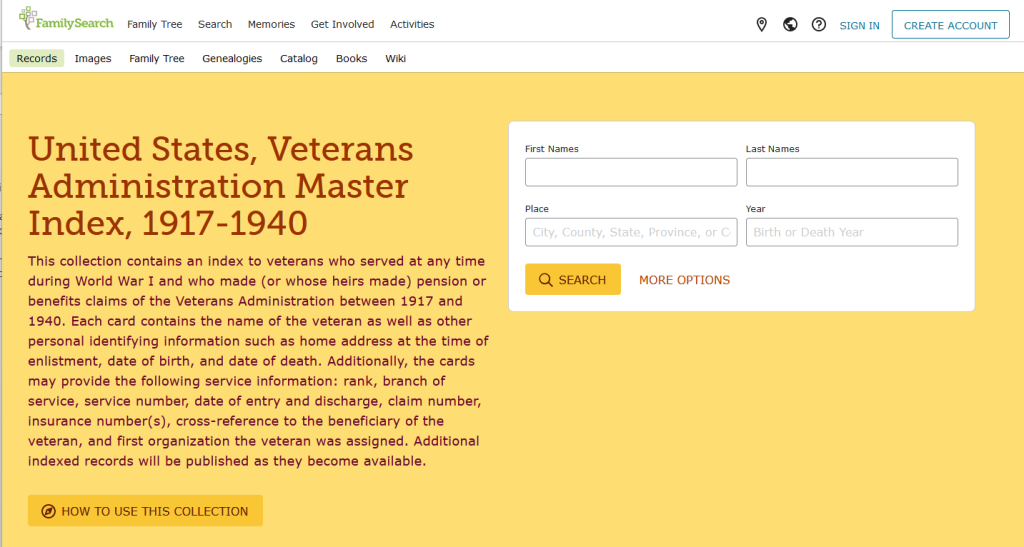Did My Ancestor Serve in WWI?

Updated 15 October 2023
In the past, I answered that question by recommending searching for information at home, searching through the U.S. Army Transport Records that documented a veteran’s trip overseas, consulting state service abstracts or contacting the National Personnel Records Center.
Now, one of the most helpful sets of records to answer that question has come online. It is the U.S. Veterans Administration Master Index from NARA’s Records of the Veterans Administration [VA] (Record Group 15).
So, gather up the list of possible candidates. Having a residence and a birth date may help you narrow down the search for ancestors with common names.
You will need a free account on FamilySearch to access these records. If you do not already use FamilySearch, you will be glad to find out about what it has to offer. The link to search the collection is United States, Veterans Administration Master Index, 1917-1940.

Enter your ancestor’s name.

Look through the search results to look for your ancestor. (Pay attention to the residence; the military service location (St. Louis) is related to where the records were stored.)

The small document icon is used to “view the record details.”

The small camera icon on the right means that you can view an image of the record.
Clicking on “view the original document takes you to the image viewer, you can view and download it.

From this image, I know the first military organization in which Joseph F. McMahon served. An important piece of information is his military service number, which is helpful when the veteran has a common name.- His birth and death dates, as well as his enlistment and discharge dates.
C is the Claim Number assigned when an application was made for a service connected disability, pension, and education and training.
An “A” number shows that this veteran was eligible for the Adjusted Compensation paid to veterans based on their WWI service.
T Indicates that the veteran had War Risk Insurance during WWI.
CT Shows the certificate number assigned by service departments with the World War I Bonus.
Learn more about these records at Family Search search page for U.S. Veterans Administration Master Index.
Learn more about the letter codes at NARA’s Key to Codes & Prefixes.
When you find an ancestor who served in WWI, you can begin to research his service. Check out our other WWI blog posts by using the Search Box and entering WWI.
Learn more about our book on this website or at Amazon Researching Your U.S. WWI Army Ancestors.



